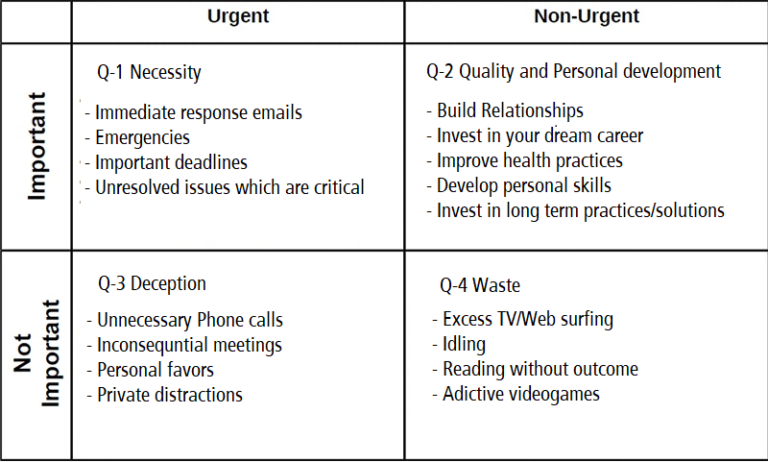
Once you’ve listed all your tasks, it’s time to evaluate. Take note of the deadlines for each of these tasks to guide you in sorting. It is better to break them down into a short and simple list, just like in a bullet journal. List down all tasks that you need to accomplish. Which among your to-dos are urgent? How about those that are important? Let’s delve deeper. For each category of work tasks is a recommended action: Do, Plan, Delegate, or Eliminate.Īlthough seemingly straightforward, it is easy to be confused about where to categorize each task. This framework is divided into four categories using two conditions on each axis: urgency and importance. Read further below to familiarize yourself with this framework and get on top of your to-dos. True enough, we often lose track of what is important in the face of insurmountable urgent tasks. “What is important is seldom urgent and what is urgent is seldom important.” He was known to leave this quote on managing tasks: Here, he discussed and popularized US President Dwight Eisenhower’s productivity matrix. Stephen Covey’s book entitled, “ The Seven Habits of Highly Effective People” has taken the world by storm. Use this framework to save time and be highly effective at your job.
COVEY PRIORITY MATRIX HOW TO
In this article, we discuss a productivity matrix that shows you how to prioritize work tasks better. Most employees take up overtime just to keep up. The Action Priority Matrix is not a substitute for in-depth quantitative analysis, but rather should be used early in the process to strain the ideas and solutions with highest ratio of impact to effort.Have you ever been stuck in a loop where work tasks kept piling up with no end in sight? You’re not alone. The Action Priority Matrix is not designed to provide an exact answer on which idea or solution to pursue its purpose is to help the team (or an individual) move forward in the decision-making process by segregating and prioritizing a large set of heterogeneous ideas or solutions into a visual matrix that is based on the team’s expertise and experience. Impact can be quantitative in nature (e.g., sales, costs, profitability) or qualitative (e.g., workforce morale, customer perception). Impact represents the desired aggregate effect of implementing an idea or solution. Effort represents any number of factors such as cost, time, resources, organizational obstacles, legal hurdles, etc., that are required to bring your idea or solution to fruition. The Action Priority Matrix is a simple visual tool that prioritizes a group of ideas, solutions, or actions across two dimensions: effort and impact.

Quick Wins (High Impact, Low Effort): Quick wins are the most attractive projects, because they give you a good return for relatively little effort.You then use your scores to plot these activities in one of four quadrants: To use the matrix, you score tasks based firstly on their impact and secondly on the effort needed to complete them.

In an Action Priority Matrix the Efforts of the activity (x-axis) are plotted perpendicularly on the Impact/ detailing (y-axis).

An Action Priority Matrix is a simple diagramming technique that helps you choose which activities to prioritize in order to make the most efficient use of your time. An Action Priority Matrix makes it easier to make decisions and sets out clearly which activities must be finished on time and which activities can be omitted or performed at a later time.


 0 kommentar(er)
0 kommentar(er)
